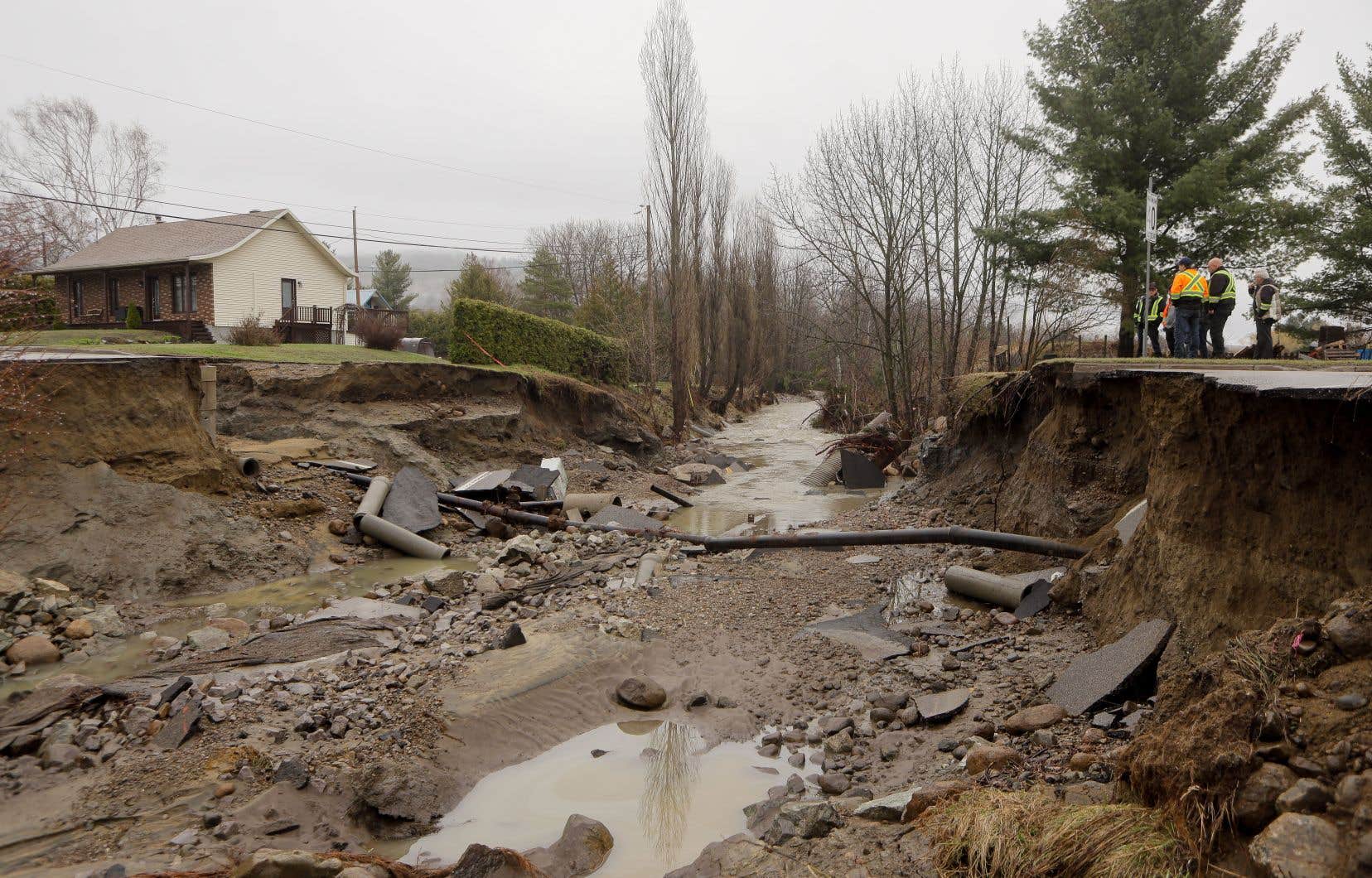We “must work on different adaptation trajectories” to climate change, not only based on what is expected and desirable, but based on the worst.
This is the warning issued by the president of the Advisory Committee on Climate Change, Alain Webster, who recalls that billions of dollars and critical infrastructure are at stake.
In a summary recently presented to the senior public service, the committee presented several scenarios on the repercussions of rising temperatures in the south and north of Quebec.
However, this data still gives a “too simple” conception of climate adaptation, according to Mr. Webster, who is working to perfect various scenarios.
Climate change is forcing us to review rainwater management, forestry management, measures against bank erosion, maintenance of the electricity network, etc.
“In risk management scenarios, we cannot only adapt to the scenario we want to have,” explained Mr. Webster in an interview with The Canadian Press. You have to remember to be a little more careful. »
A single degree Celsius of variation from forecasts can lead to a series of consequences.
The main scenarios in Quebec
In the least serious scenario constructed from the hypotheses of the Intergovernmental Panel on Climate Change (IPCC), the average increase in temperatures would be limited to 3°C in southern Quebec by 2050 and the increase in precipitation would be 5%.
In the “Quebec of resources”, the temperature rise would be around 3.5°C and precipitation would increase by 9%. In northern Quebec, we are talking about an increase of 4.5°C and precipitation up by 12%.
The optimal scenario, that is to say the target of an average increase in temperatures of 1.5°C provided for by the 2015 Paris Agreement, is still difficult to model finely over the entire Quebec, said Mr. Webster.
The researchers therefore adopted another hypothesis, namely an average increase of more than 2°C, which would give an average of 2.6°C in Quebec.
In risk management scenarios, we cannot only adapt to the scenario we want to have.
“If we want to manage risks adequately, we must be a little more careful in our prevention strategies, because the reduction of GHG emissions by States could be less rapid and effective,” adds the president of the Advisory Committee.
“With very, very long-term issues, with infrastructures that are very at risk, perhaps we need to go even further, let’s be very, very careful. If the unlikely scenarios ever come true, it will be necessary to increase [les mesures] adaptation. »
But in the worst scenario, if nothing is done and the exploitation of fossil fuels continues briskly, the average increase in temperatures in southern Quebec will be 6°C and precipitation 15% by 2100. , while in the North it will be worse: average temperatures will rise by 10°C and precipitation by 35%.
“This would be the most catastrophic scenario, [possible] if we don’t do anything. Fortunately this is the least likely, because many states have reduced their greenhouse gas emissions. »
Profitable investments
The summary compiles the costs and impacts already assessed in terms of adaptation. Thus, a $1 invested in adaptation would yield up to $15 in direct and indirect benefits.
Hydro-Québec has estimated that its network maintenance costs would drop from $656 million to $1 billion. As many as 46,000 homes will be at risk by 2050 due to coastal flooding. Also, the costs of interior flooding in homes will amount to $829 million, an increase of 230%.
The committee also estimates that health costs will increase, based on what was recorded in the health network during the heatwaves of 2010.
It’s a very busy spring in terms of climate research in Quebec. Indeed, three essential documents will be made public soon.
A group of experts including Mr. Webster will soon submit recommendations on climate adaptation to the Minister of the Environment, Benoit Charette.
There will also be an assessment of Quebec’s entire climate approach, which had just been finalized recently and which was to be submitted to the minister and then made public.
Finally, there is also an opinion that was going to be given to the minister on carbon pricing.
The notices are made public 30 days after being given to the minister, unless he requests that they be made public before.
